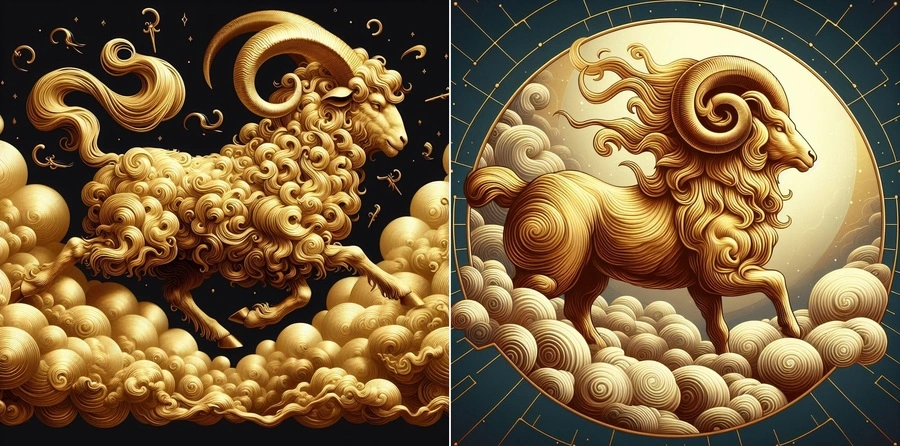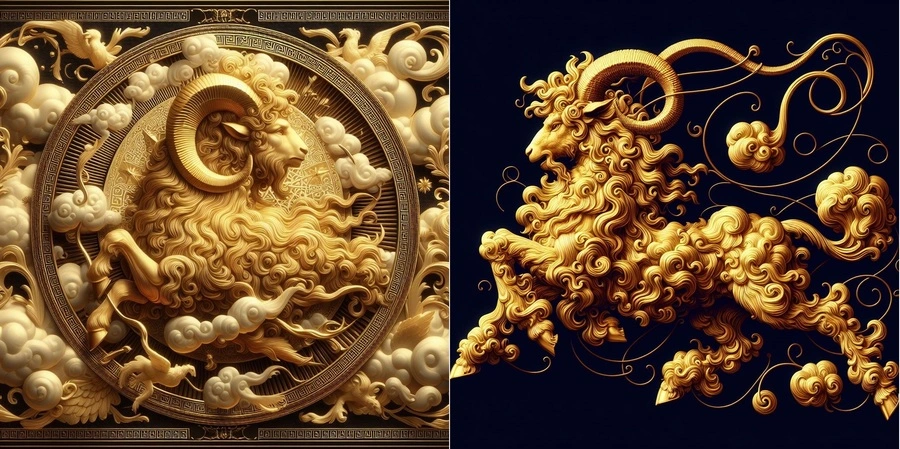
In Greek mythology, the Golden Fleece was a symbol of power and prestige. It was a magical object that possessed incredible abilities and was coveted by many.
According to the myth, the Golden Fleece belonged to a golden ram that was said to have been sent by the gods to rescue two children who were in danger. The ram was said to have flown them away to safety on its back, and when it landed, its fleece became entangled in a tree.
Years later, a king named Aeetes came to possess the Golden Fleece, and it became a source of power and prestige for his kingdom. The Fleece was said to have the ability to heal the sick, provide fertility to crops, and protect the kingdom from harm.
In order to obtain the Golden Fleece, Jason and the Argonauts embarked on a perilous journey. They sailed to the kingdom of Colchis, where the Fleece was kept, and sought to retrieve it. The journey was filled with dangers, including harpies, clashing rocks, and a fire-breathing dragon that guarded the Fleece.
However, with the help of the sorceress Medea, Jason was able to retrieve the Golden Fleece and return it to Greece. The Fleece became a symbol of Jason’s bravery and power, and it was said to have brought prosperity to the kingdom of Thessaly, where it was kept.

Golden Fleece Story
The Golden Fleece was not just a symbol of power, but it also possessed incredible abilities. It was said to be able to heal the sick, provide fertility to crops, and protect the kingdom from harm. The Fleece was also said to have the ability to give its possessor great wealth and prosperity.
However, the Golden Fleece also had a dark side. Its powers were coveted by many, and it was often the cause of greed and conflict. Its retrieval by Jason and the Argonauts sparked a war between the kingdoms of Greece and Colchis, and the Fleece was often used as a bargaining chip in political alliances.
The myth of the Golden Fleece is a cautionary tale about the dangers of greed and ambition. The Fleece was often sought after for its magical powers, but those who sought it often met with disaster. It was a symbol of power and prestige, but it also brought conflict and strife.
5 Myths and Facts about the Golden Fleece
- The Origin of the Golden Fleece: The Golden Fleece came from a magical ram named Chrysomallos, a gift from the god Hermes to Nephele. This ram possessed the ability to fly and had a fleece made of pure gold. Chrysomallos was sent to rescue Nephele’s children, Phrixus and Helle, from their wicked stepmother. Tragically, Helle fell into the sea (giving her name to the Hellespont), but Phrixus survived and reached Colchis.
- Phrixus and King Aeëtes: Upon arriving in Colchis, Phrixus sacrificed the ram to Zeus, as a gesture of gratitude. He then presented the Golden Fleece to King Aeëtes, who hung it in a sacred grove guarded by a never-sleeping dragon. The fleece became a symbol of Aeëtes’ divine right to rule.
- Divine Interventions: The quest for the Golden Fleece was marked by numerous divine interventions. Hera, the queen of the gods, favored Jason and orchestrated events to aid him. Athena, Hermes, and other deities also played roles in guiding and assisting the Argonauts, highlighting the intricate relationship between mortals and gods in Greek mythology.
- The Fleece as a Symbol of Kingship: The Golden Fleece symbolized more than a mere treasure; it represented legitimate kingship and divine favor. By retrieving it, Jason aimed to prove his worthiness to rule. This motif of a quest for a sacred object to legitimize rule is a recurring theme in mythology and folklore worldwide.
- The Dragon’s Unyielding Vigilance: The dragon that guarded the Golden Fleece was no ordinary creature. It was said to be an enormous, ever-watchful serpent, enchanted to never sleep. This unyielding vigilance symbolized the immense challenges and seemingly insurmountable obstacles that heroes must overcome to achieve their goals.
The Order of the Golden Fleece
Philip the Good founded the Order of the Golden Fleece on January 10, 1430, in Bruges, during the occasion of his marriage to Isabella of Portugal. The creation of the order served multiple purposes: it was a celebration of his nuptials, a demonstration of his wealth and power, and a means to unite the nobility under a banner of chivalric ideals. Inspired by the legendary Golden Fleece of Greek mythology, the order’s name symbolized purity, wealth, and divine favor.
The Order of the Golden Fleece was originally composed of 24 knights, a number that Philip the Good later increased to 30 and eventually 51. Membership was exclusive, limited to the high nobility, and required the approval of the sovereign head of the order. The head of the order, initially Philip the Good, was tasked with maintaining the order’s statutes and traditions. Each knight pledged to uphold the ideals of Christianity, defend the sovereignty of the Burgundian state, and support the order’s objectives.
The order’s emblem, a golden fleece suspended from a jeweled collar, is rich in symbolism. The fleece represents the legendary Golden Fleece sought by Jason and the Argonauts, signifying adventure, bravery, and noble quest. The collar, adorned with intricate symbols of fire-steels and flints, symbolizes the spark of chivalric virtue and the enduring light of noble deeds. The motto of the order, “Pretium Laborum Non Vile” , encapsulates the honor and recognition bestowed upon those who embody the order’s ideals.
Throughout its history, the Order of the Golden Fleece wielded considerable political and social influence. During the Burgundian period, it served as a tool for consolidating power and loyalty among the European nobility. The order’s gatherings, known as chapters, were opportunities for the elite to discuss matters of state, forge alliances, and participate in elaborate ceremonies that reinforced their status and unity.
The order’s influence extended beyond Burgundy. Following the marriage of Mary of Burgundy to Maximilian I of Austria, the order became closely associated with the Habsburg dynasty. This association ensured the order’s continuity and prominence as it adapted to the changing political landscapes of Europe, including the Spanish and Austrian branches that emerged as the Habsburgs’ power grew.
Today, the Order of the Golden Fleece continues to exist as two distinct branches: the Austrian and the Spanish. The Austrian branch, headed by the Habsburg family, and the Spanish branch, presided over by the King of Spain, both maintain the traditions and statutes established by Philip the Good. Although the order’s political power has waned, its symbolic significance endures.
In modern times, the Golden Fleece has become a symbol of adventure and treasure. It has been featured in countless works of literature, art, and film, and it continues to capture the imaginations of people around the world.